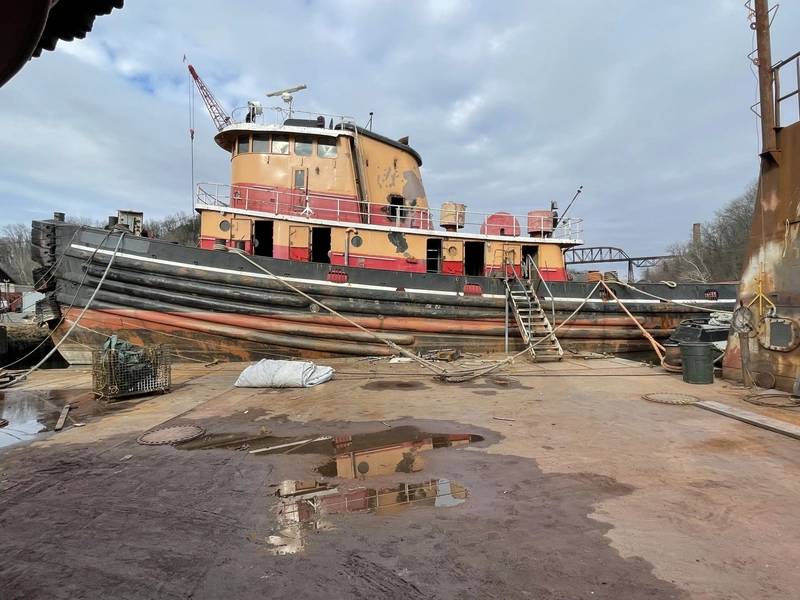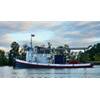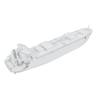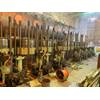Why Ammonia Is the Fuel of the Future for Maritime Shipping
Commercial maritime shipping has a fuel problem. While the industry has cemented its position as the essential piece of the global supply chain—moving more than 80% of all international goods by volume—its dependence on carbon-emitting fuel has come with a high cost.
Maritime shipping is responsible for roughly 3% of all greenhouse gas emissions, according to the International Maritime Organization. The longer that ships continue to run on carbon-emitting fuel, the harder it will be to reach net zero emissions by 2050 and to prevent the worst damage predicted by climate scientists. That’s why the International Energy Agency has urged a transition to alternative fuels as quickly as possible, determining that the sector will have to reduce emissions by 15% between 2025 and 2030 to get on track.
Such immediate action may sound like a tall order, but we already know how to transform maritime shipping into a sustainable, emission-free powerhouse for tomorrow’s global economy. In countries around the world, forward-thinking trailblazers are investing in ammonia as the maritime fuel of the future.
Ammonia’s promise as a maritime fuel
To understand the unique characteristics of ammonia, it’s worth considering why carbon-emitting fuels like heavy fuel oil are such attractive choices within the maritime shipping industry. Any green technology that aims to replace HFO and other polluting fuels must meet three criteria where those historically excel: high energy density, robust supply and reasonable price, and efficient distribution and storage.
Looking at other alternative fuels (many of which can and will serve other important maritime uses), it’s clear they fall short in various ways for shipping. Liquified natural gas (LNG), though abundant, emits CO2. Methanol is expensive to produce in a carbon-neutral fashion, with a limited supply until direct air capture technology matures at some point in the future. Hydrogen must be highly pressurized or cooled to very low temperatures to achieve a moderate density, creating cost and logistical challenges for use as a bunker fuel. And batteries simply don’t have the necessary storage capacity and energy density; if you built a battery large enough to propel a cargo ship, there wouldn’t be space left for the actual cargo.
Ammonia, meanwhile, stands out as the most economically viable carbon-free fuel for maritime shipping. As the second most commonly produced chemical in the world, it provides the benefits of hydrogen without the logistical and investment challenges. It is already shipped as cargo to approximately 200 ports worldwide and transported internationally by 40 vessels on a regular basis. Though it is a toxic substance, ammonia has been safely used in industrial and agricultural settings for more than a century and there’s a well-established regulatory framework for its production, storage and transportation. Moreover, ammonia takes a short time to refuel as opposed to batteries, which need extensive recharging time.
From an energy standpoint, ammonia is such a promising fuel because it is broadly available, affordably priced, easy to store and uses existing transport and storage infrastructure. Because ammonia does not easily burn like heavy fuel oil, its energy is more easily harnessed through a chemical process called cracking. At Amogy, we’ve pioneered an innovative ammonia-to-power system that splits, or “cracks,” liquid ammonia into its base elements of hydrogen and nitrogen, then funnels the hydrogen into a fuel cell. This method of ammonia cracking generates high-performance power at five times the energy density of lithium batteries—meeting the needs of future maritime shipping without the carbon emissions.
 Amogy’s ammonia-to-power technology feeds liquid ammonia through its cracking modules integrated into a hybrid fuel cell system, which powers electric motors. The company is currently converting a 1957-built tug at Feeney Shipyard in Kingston, N.Y. to run on its 1-megawatt (MW) system. Amogy said it intends to trial the tugboat later this year in upstate New York. (Photo: Amogy)
Amogy’s ammonia-to-power technology feeds liquid ammonia through its cracking modules integrated into a hybrid fuel cell system, which powers electric motors. The company is currently converting a 1957-built tug at Feeney Shipyard in Kingston, N.Y. to run on its 1-megawatt (MW) system. Amogy said it intends to trial the tugboat later this year in upstate New York. (Photo: Amogy)
Building a carbon-free future with ammonia
Of course, we must start building for the future now. While ammonia is widely produced around the world, the maritime industry will need an increased supply of low carbon ammonia as fuel.
Encouraging investments in blue and green ammonia production are a strong sign that supply will grow in concert with rising fuel demand. In countries such as the U.S., Saudi Arabia, Oman and U.A.E., green ammonia plants are being constructed, often with the benefit of government subsidies.
The maritime industry is simultaneously stepping up to develop safe and effective green ammonia bunkering protocols. Yara International and Azane Fuel Solutions are constructing the world’s first carbon-free ammonia bunkering network in Scandinavia. In the U.S., a consortium of maritime industry giants is conducting a feasibility study on green ammonia bunkering off the East Coast. Similar projects are underway in Houston and Hamburg, while the Global Centre for Maritime Decarbonisation is studying its prospects for Singapore.
As this bunkering infrastructure is being developed, Amogy plans to launch the world’s first ammonia-powered, zero-emission vessel later this year, then deploy a commercial version of our ammonia-to-power system in 2024. We look forward to more companies joining us on the water to collaboratively work to create this new market aimed at decarbonizing the industry.
For maritime shipping to reach Net Zero 2050 goals, it’s imperative that the industry pivot away from carbon-emitting fuels and embrace alternative energy. Maritime leaders understand this, which is why they support a sensible “well-to-wake” strategy for emissions reduction. Within such a framework, ammonia offers the best and clearest path forward to a decarbonized future. No other carbon-free fuel is as affordable, accessible, and storable with high enough energy content to power ships, which is why it’s only a matter of time until maritime shipping moves toward ammonia-based solutions. By making those investments today, we’re ensuring the strength of sustainable maritime shipping for decades to come.














